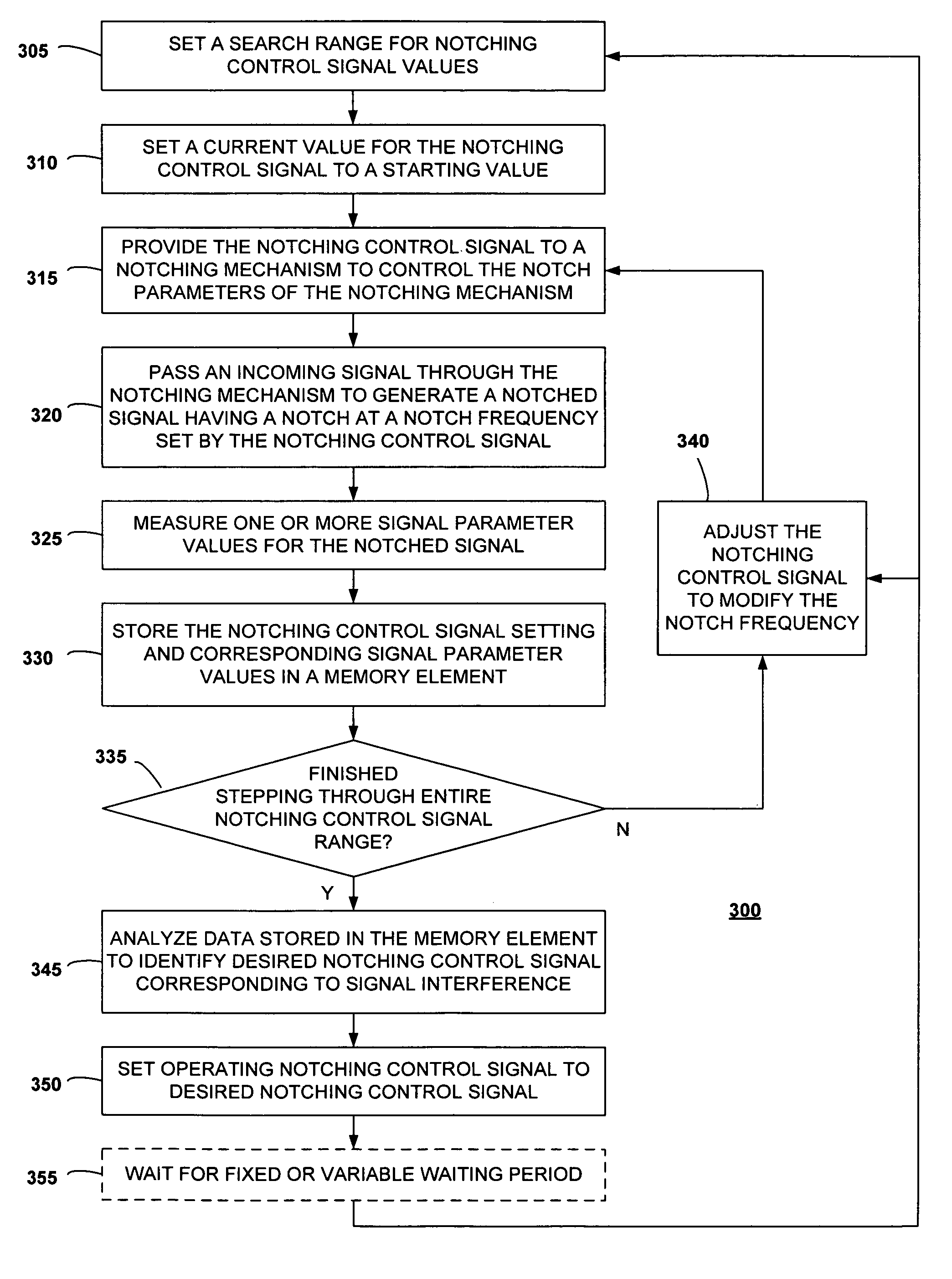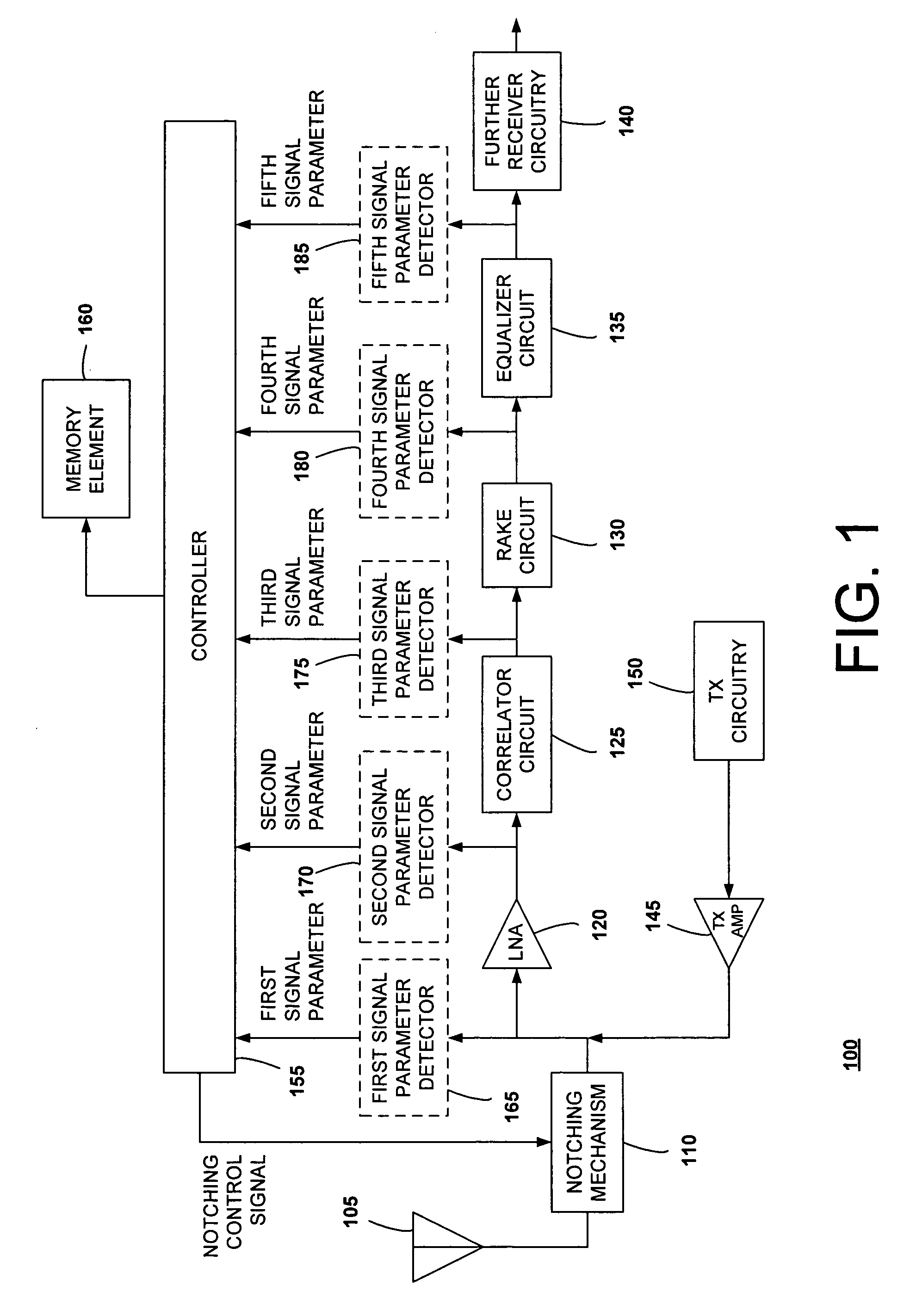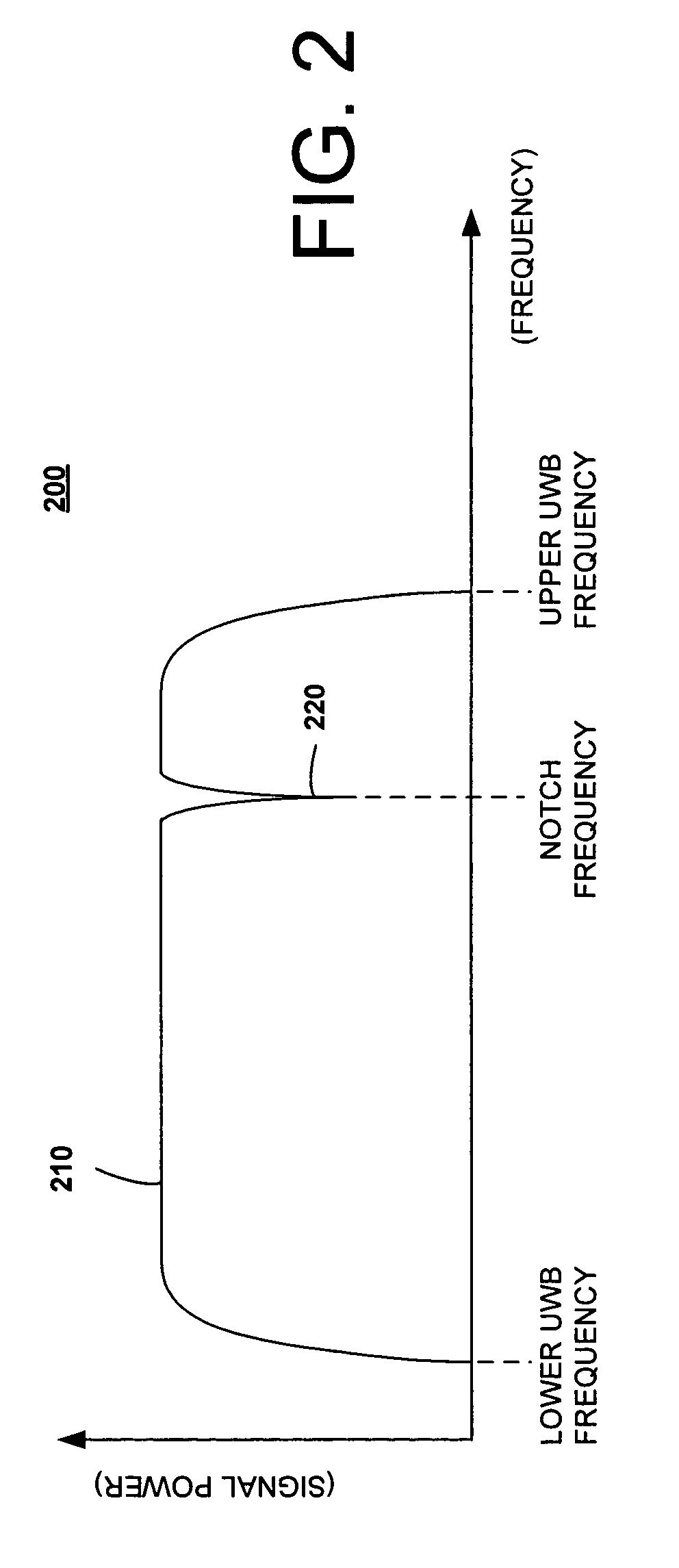Method and system for controlling a notching mechanism
a notching mechanism and control method technology, applied in the field of wireless networks, can solve the problems of more narrowband interfering signals, interference signals, and inability to predict at what frequencies an interference signal occurs
- Summary
- Abstract
- Description
- Claims
- Application Information
AI Technical Summary
Benefits of technology
Problems solved by technology
Method used
Image
Examples
first embodiment
[0023]FIG. 1 is a block diagram of a transceiver including a notching control circuit, according to a first disclosed embodiment of the present invention. As shown in FIG. 1, a transceiver 100 includes an antenna 105, a notching mechanism 110, a low noise amplifier (LNA) 120, a correlator circuit 125, a RAKE circuit 130, an equalizer circuit 135, additional receiver circuitry 140, a transmitter amplifier 145, transmitter circuitry 150, a controller 155, a memory element 160, and one or more of a first signal parameter detector 165, a second signal parameter detector 170, a third signal parameter detector 175, a fourth signal parameter detector 180, and a fifth signal parameter detector 185.
[0024]The antenna 105 is configured to transmit and receive signals over a bandwidth used by the transceiver 100. It can be any sort of antenna that is suitable to the type of transceiver 100 used.
[0025]The notching mechanism 110 is a notching device whose notching frequency (and possibly other no...
second embodiment
[0060]FIG. 4 is a block diagram of a receiver including a notching control circuit, according to a second disclosed embodiment of the present invention. In this embodiment, multiple notching mechanisms are employed.
[0061]As shown in FIG. 4, a transceiver 400 includes an antenna 105, a low noise amplifier (LNA) 120, receiver circuitry 440, a transmitter amplifier 145, transmitter circuitry 150, a controller 455, a memory element 460, a signal parameter detector 485, and two or more of a first notching mechanism 410, a second notching mechanism 412, a third notching mechanism 414, and a fourth notching mechanism 416.
[0062]The antenna 105, LNA 120, transmitter amplifier 145, and transmitter circuitry 150 operate as described above with respect to FIG. 1. The receiver circuitry 440 includes all of the signal processing on the receiver path downstream of the LNA 120. This could include correlators, RAKE, equalizers, etc.
[0063]The first notching mechanism 410 is placed between the antenna...
third embodiment
[0070]FIG. 5 is a block diagram of a receiver including a notching control circuit, according to a third disclosed embodiment of the present invention. In this embodiment, two notching mechanisms are used at different parts of a circuit such that there is not a direct correspondence of their notching controls signals and their notching frequencies.
[0071]As shown in FIG. 5, a receiver 500 includes an antenna 105, a first notching mechanism 510, a low noise amplifier (LNA) 120, a receiver amplifier 538, receiver circuitry 540, a controller 555, a memory element 560, a signal parameter detector 485, a mixer 590, and a local oscillator 595, and may include a second notching mechanism 512.
[0072]The antenna 105 and the LNA 120 both operate as described above with respect to FIG. 1.
[0073]The first notching mechanism 510 is placed between the mixer 590 and the receiver amplifier 538 and notches signals in a baseband portion of the receiver path. The second notching mechanism 512, if it is i...
PUM
 Login to View More
Login to View More Abstract
Description
Claims
Application Information
 Login to View More
Login to View More - R&D
- Intellectual Property
- Life Sciences
- Materials
- Tech Scout
- Unparalleled Data Quality
- Higher Quality Content
- 60% Fewer Hallucinations
Browse by: Latest US Patents, China's latest patents, Technical Efficacy Thesaurus, Application Domain, Technology Topic, Popular Technical Reports.
© 2025 PatSnap. All rights reserved.Legal|Privacy policy|Modern Slavery Act Transparency Statement|Sitemap|About US| Contact US: help@patsnap.com



